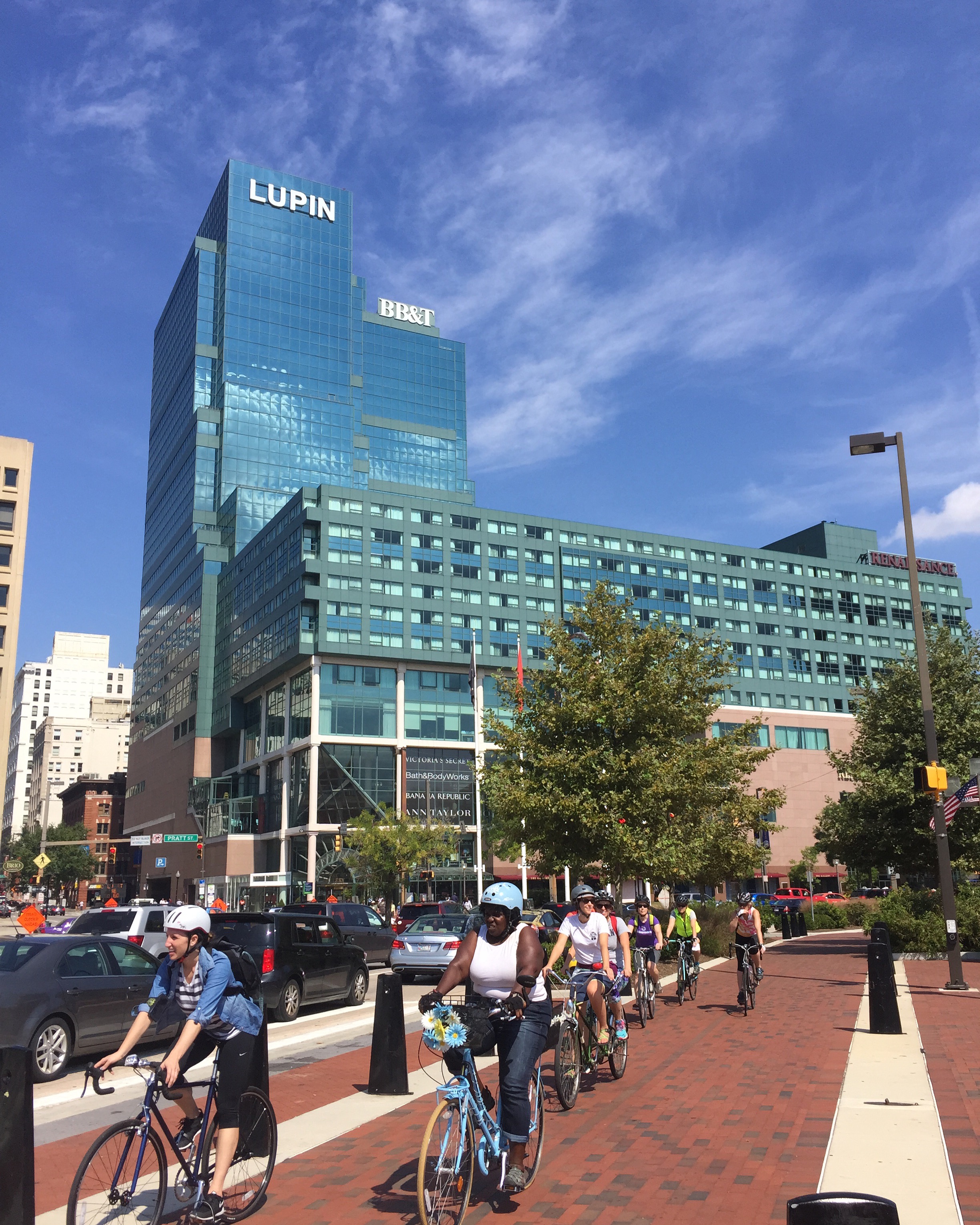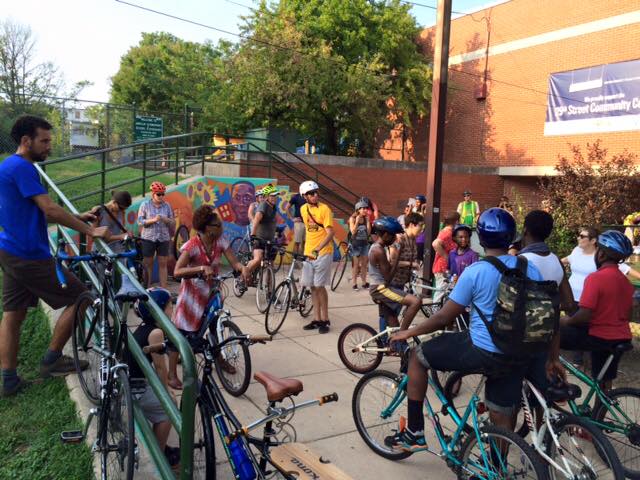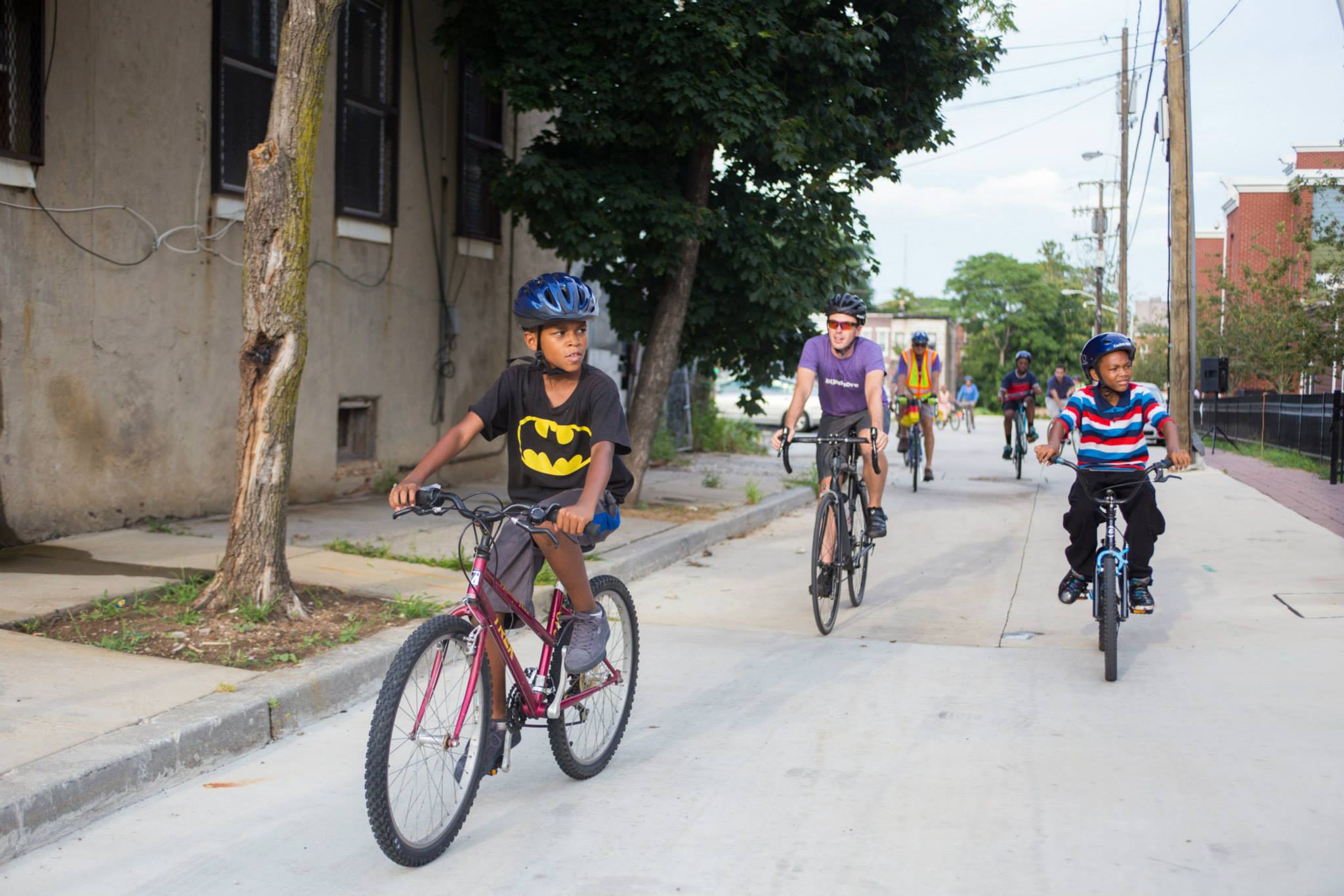This year was an incredibly important year for bikes in Baltimore. From memorializing the life of Tom Palermo to galvanizing people who bike to get to the polls through the launch of our I Bike, I Vote initiative, our members have turned out in ways that leave no doubt that we are growing as a movement--that bikes and Baltimore fit together a little better than the year before. As 2015 comes to a close, let's look back on all that we've accomplished together! Want to help us grow and do bigger and better things in 2016? Consider a year end gift. Together, we are building a force for biking in Baltimore!
And now our year in review...
Memorial Ride for Tom Palermo
2015 began on a somber note. On January 1st, hundreds of bicyclists gathered to pay tribute to Tom Palermo. His death was tragic, and he will be forever missed. But his passing also deepened the resolve of those in the bicycling community to work harder to ensure another family doesn't have to suffer the same immense loss.
Hundreds of people on bikes gather to pay tribute to Tom Palermo. Photo Credit: Baltimore Sun
Baltimore City Adopts Bicycling Master Plan
The long overdue update of our city's bicycle master plan solidified Baltimore City's commitment to growing a bicycle network. And while our work has just begun to ensure this is a plan that doesn't simply exist on paper--but is implemented--this was a critical first step in mapping out the city's future as one where all modes are considered on our roadways.
Mayor Signs Executive Order Forming Bicycle Advisory Commission
The Mayor's Executive order breathed life into a dormant committee by drawing on talent from the private and public sector to ensure the Bike Master Plan comes to fruition. Bikemore has been a part of the commission since its creation in March, and has been able to see firsthand the dedication of these commission members as they work to ensure the city better coordinates agency efforts and allocates proper funding for future projects.
Hired a New Executive Director
After an extensive national search, Bikemore hired Liz Cornish to lead Bikemore in its next phase of growth. Cornish came to Bikemore after working on national advocacy issues at the League of American Bicyclists.
Community Bike Rides
We upped our game when it came to providing programs that brought people together to share in their love of bikes. We hosted five new community rides that hosted over 200 participants. We hosted rides with the 29th St. and North Barclay Green Community Centers that brought youth and adults together, we hosted women from D.C. as they rode the MARC bike train to explore Baltimore with other ladies who ride, we toured architectural sites by hosting a ride for Doors Open, and partnered with Brewer's Art to host the Future of Biking in Baltimore ride that explored all the places slated to get improvements in 2016-2017. We know that group rides are a great way to introduce folks to urban riding, and build community among existing riders. We look forward to planning more rides in 2016!
Charles Street Complete Street
Photo Credit: Baltimore Sun
October saw the long awaited completion of the Charles Street "complete street" construction. The project created much needed pedestrian improvements, traffic calming, and the addition of buffered bike lanes. Charles Street is now much safer for all road users, and we hope this public-private partnership to create livable streets can become a model that is replicated elsewhere in the city to spur safer street projects.
I Bike, I Vote Kick Off
On November 8th, 2015 we threw a party to share our platform for the 2016 election. Our goal was to get people stoked on connecting their transportation and recreation choice--biking to voting. The event exceeded our wildest expectations. We had 5 Mayoral Candidates, 16 Council Candidates and over 200 constituents attend our rally to get out the bike vote. In the coming year, we have more opportunities to engage in the upcoming election and educate voters about where each candidate stands on creating a more bikable, walkable Baltimore.
Baltimore's First Annual Cranksgiving
We hosted over 80 riders, who went on a scavenger hunt to procure $1000s in groceries to donate to Moveable Feast. We had a ton of fun, and learned a lot about how to grow and strengthen this new bikey holiday tradition. Can't wait for next year to be even bigger and even better!
Transform Baltimore
Sometimes fighting for livable streets means getting a little wonky and organizing against policies that don't directly relate to biking, but facilitate a way of thinking about growth that undermines the creation of bikeable places. Our new zoning code has been awaiting City Council adoption for years. Just when we are getting close to the finally adopting a form based code that will ensure that all neighborhoods are developed in a way that considers things like walkability, historic preservation, and safety, the Council began voting on hundreds of amendments at a rapid pace. Thanks to your support, we were able to mobilize dozens of Bikemore members to send emails to the transportation and land use committee and ensure that the amendments most harmful to livable streets were opposed.
Roland Avenue Cycletrack
Christmas came early with the installation of the Roland Avenue Cycletrack. This two mile stretch of parking protected bike lane taught us a lot of lessons. First, in what took only 14 months from project concept to completion--it showed the value of local dollars in speeding up the implementation of new bike facilities. To our chagrin, it lapped the installation of the Maryland Avenue Cycletrack--which spent the entire year under State Highway review due to use of Federal funds. So while this facility had some challenges in design and community support, as Baltimore's first parking protected bike lane, we decided it was important to throw our support behind the project and ensure its installation. As the Roland Park community and city continue to work out the kinks in terms of parking compliance, maintenance, and signage, the result is a beautiful reminder of what a complete street in Baltimore can look like. Change is hard, and we knew wherever the first facility of this kind was installed we would face some opposition. But seeing BCDOT's commitment to the project despite some divisive community opposition gives us hope that whatever opposition future projects face, we have turned a corner in terms of the city leading on complete street issues. And that is cause for celebration.
Thank you for helping us build a force for biking in Baltimore in 2015!


















